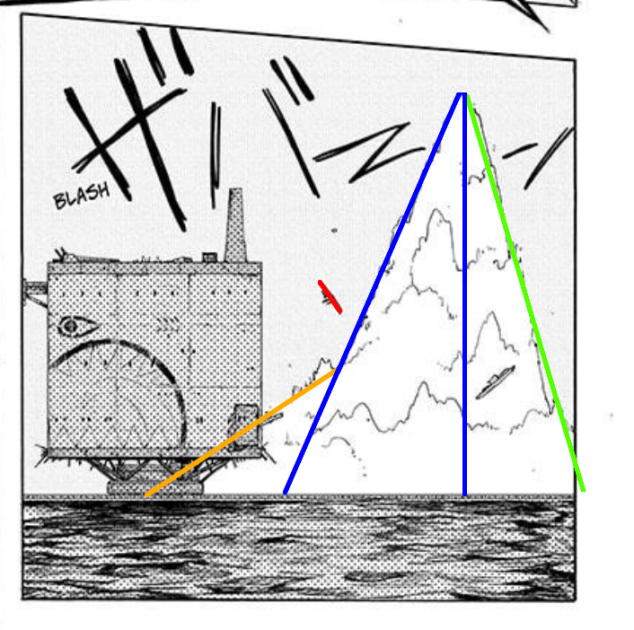The way water molecules bond to one another, the oxygen attracts two hydrogens, and the hydrogens each attract to one oxygen. When simplified to two dimensions, this causes them to form a pattern somewhat like brickwork. So you can effectively map the area covered by each molecule through length x (height + distance between molecules).
Since water’s an angled molecule, we can use that to find the height. Using the same source you found the size of water molecules in, the angle is 104.45 degrees.
Using an
isosceles triangle calculator, with base angle of (180-104.45)/2 = 37.775 and base of 0.28 we can find the height to be 0.14725nm
Based on
this the average distance between water molecules is 3.1 angstroms (0.31 nm)
So the area per water molecule would be around 0.28nm*0.45725nm = 0.12803nm^2, or 1.2803e-15cm^2
The minimum number of hydrogen bonds should be the number of water molecules minus 1.
For the picoscale, it’s smaller than an atom, but still larger than the
nucleus of an iron atom. Since our subatomization is based on destruction of the nucleus, it might not be the best value to use here. Maybe using ionization energy might be better? Since the destruction is 19.6pm out of the 126pm of an iron atom, maybe you could assume it removed 15.55% of the electrons spread throughout (so, about 4)? I’m not confident in this method, but I think it makes more sense here than nucleus destruction. The energy of the first ionization from iron is
7.9024eV or 1.266104e-18 Joules. I tried to calculate later ones, but looking at my result I’m confident I used the equation wrong
